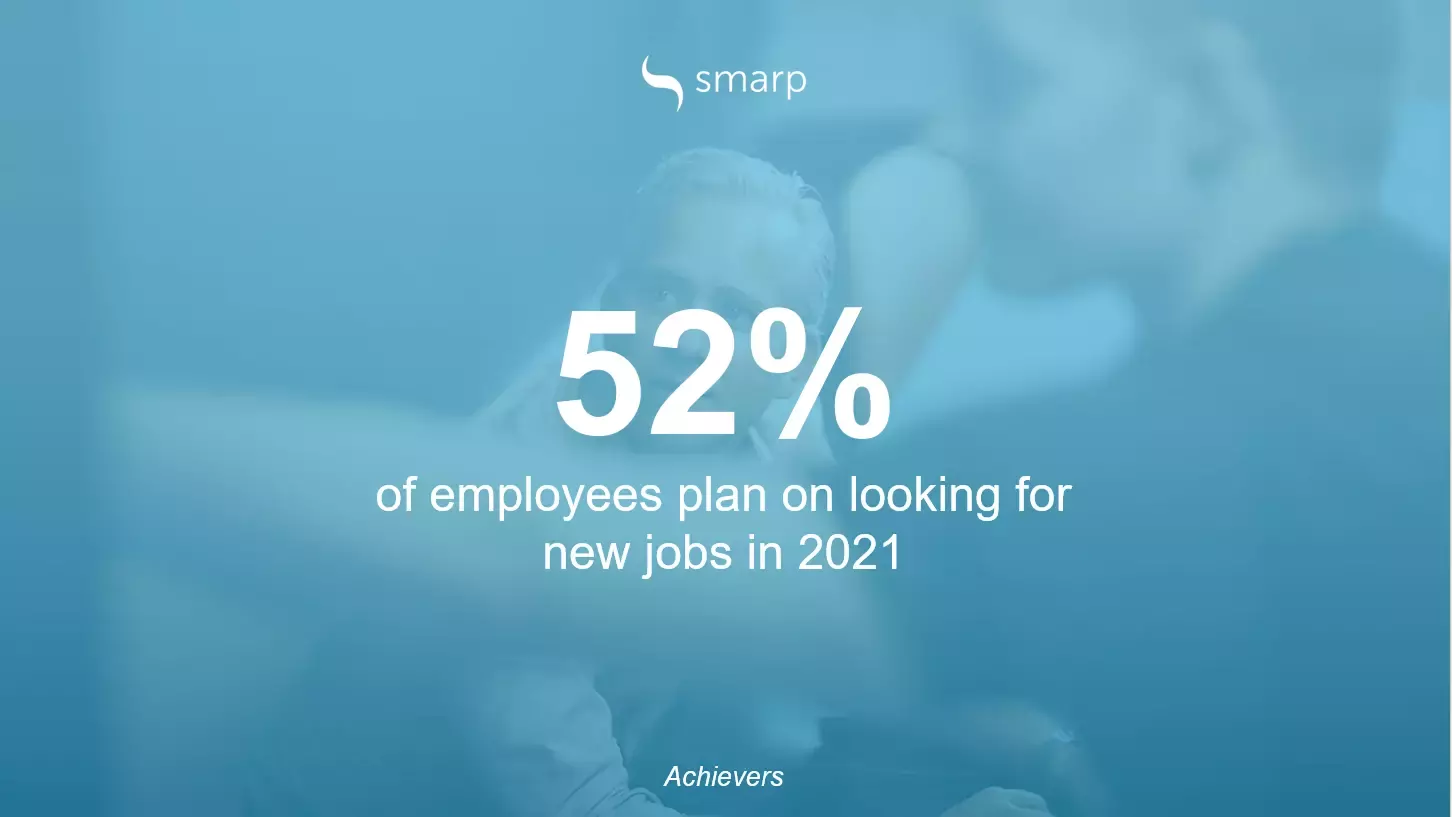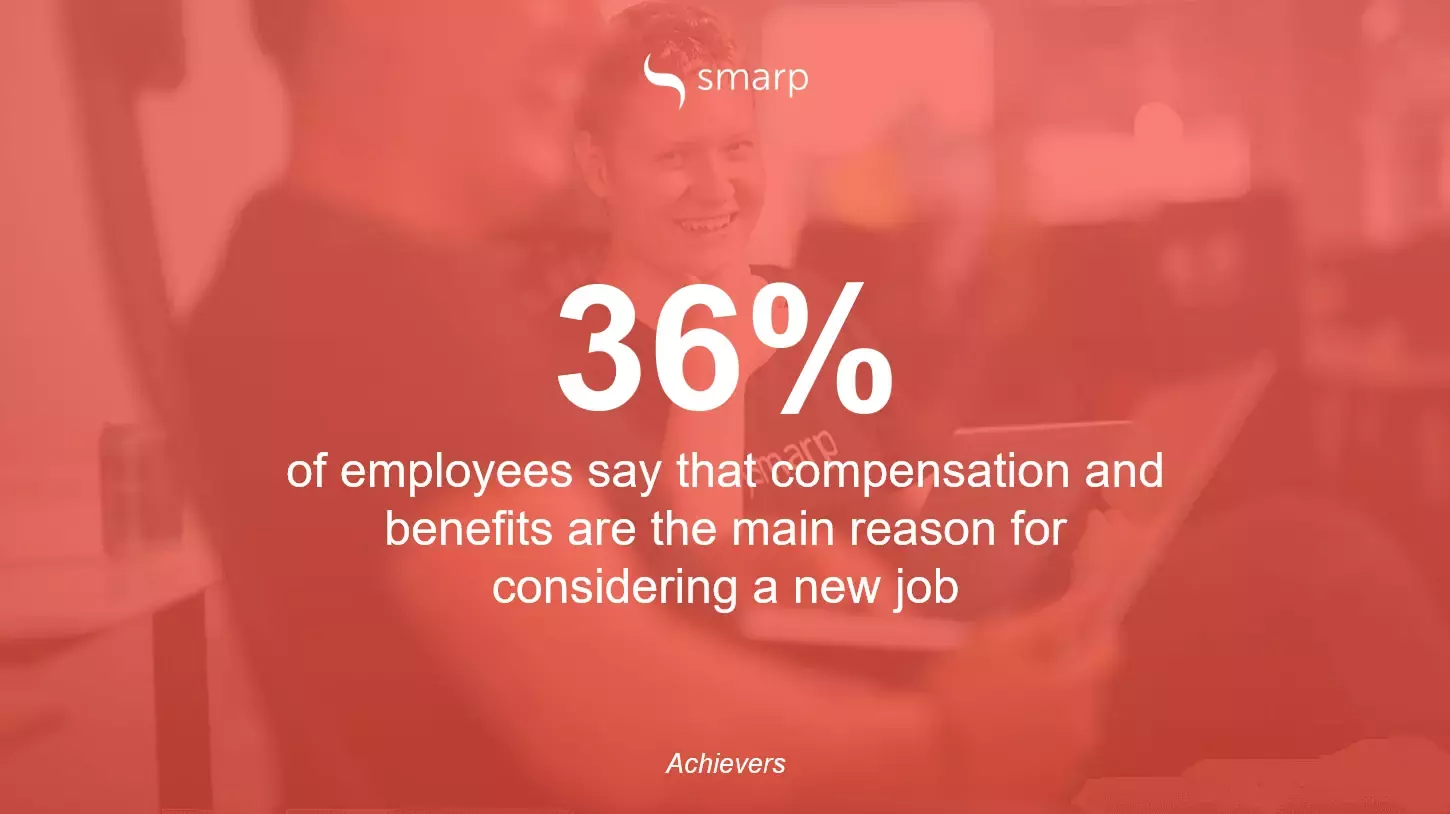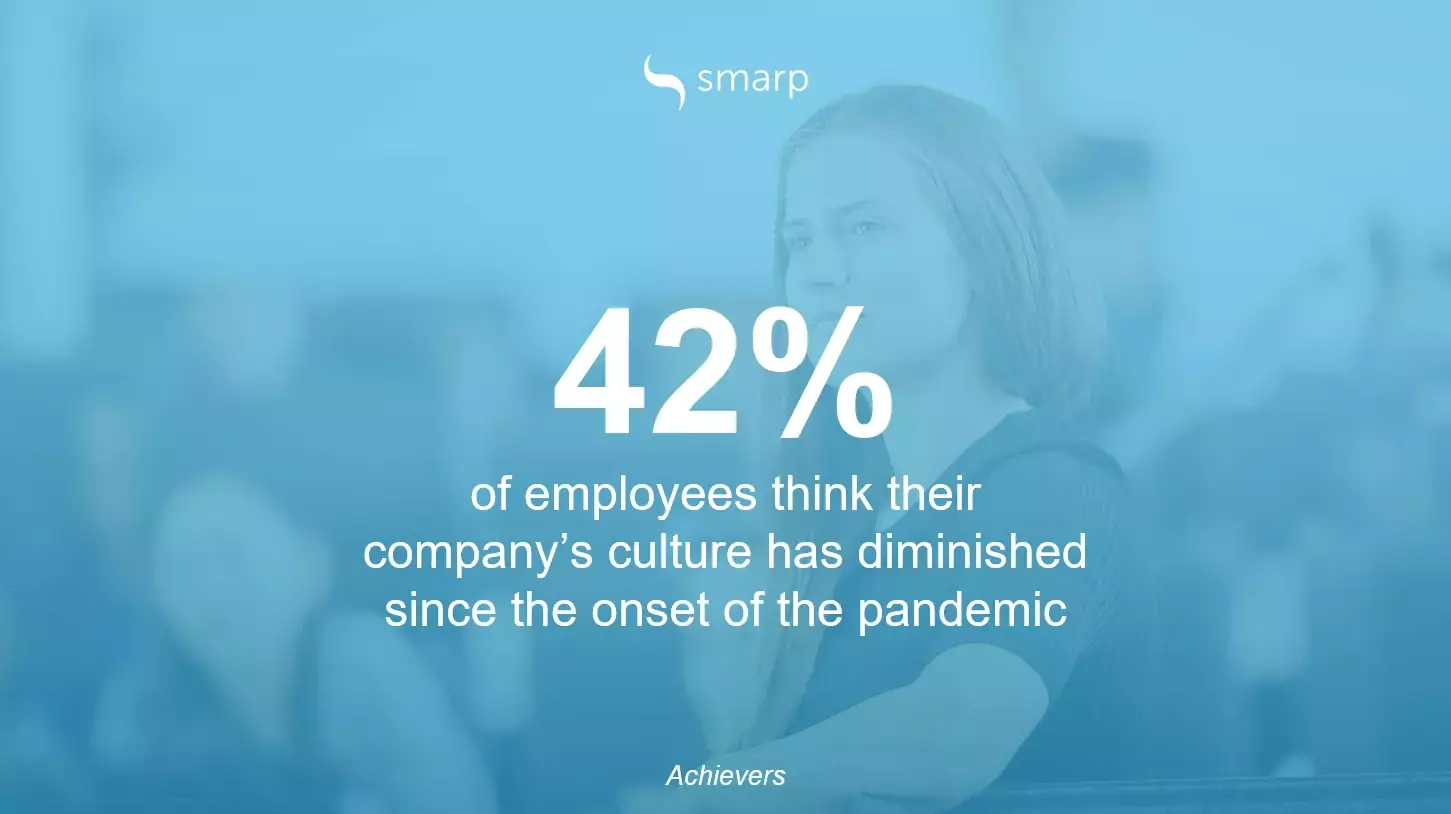Employee turnover is one of the main concerns among HR professionals across the world. Since the cost of employee turnover is extremely high, organizations are constantly trying to find new ways to keep their talent within their organizations.
However, employee turnover rates are not dropping – they are on the rise and are expected to keep rising in the future.
📚 Because poor internal communications are one of the main causes for high employee turnover, check out our guide Building a Better Company with Internal Communications.
Is Employee Turnover Higher Than Ever?
Is the “Turnover Tsunami” really happening?
Seems like it!
Employees across the world have been going through difficult times during the current pandemic, and this situation is nowhere to be over.
According to research, 52% of employees (up from 35% in 2020) plan on looking for new jobs in 2021. One of the biggest reasons for such high numbers is poor work-life balance. 25% of employees named work-life balance as the reason they would job hunt.

Another big reason for high employee turnover is the fact that people feel less connected to their colleagues and their organizations. Remote and hybrid ways of working are here to stay, but we need to better understand its consequences and negative impacts on employee morale, engagement, and productivity. 46% of employees say they feel less connected to their company now than they did before the pandemic.
9 Ways to Decrease Employee Turnover in Your Organization
The gig economy, hybrid and remote work, multigenerational workplaces…these are just a few reasons why some old employee retention strategies may not work anymore.
Today, organizations have to reconsider their talent management efforts and adjust them according to the new world situation. So let’s take a look into the 9 ways employers can fight high employee turnover today.
1. Ensure fair compensation and benefits packages
Fair compensation and benefits are still on the top of the list of reasons why employees leave their organizations. To be more precise, according to the previously mentioned research, 36% of employees say that comp and benefits are the main reason for considering a new job.

Today, when many employees can work from anywhere in the world, organizations are struggling to offer more attractive benefits compared to countries with higher standards of living.
📺 Before we dig deeper, watch our online session where IC professionals share their #1 tip for engaging distributed workforces.
2. Offer career development programs
According to the Work Institute’s 2021 Retention Report, the number one reason for employees’ premature departure was ‘career issues’ with their current employer. This means that there was a lack of growth opportunities – 1 in 5 employees left for this reason.
Many Millennials and Gen Z employees (who make the majority of the world’s workforce) are very career-driven. Offering opportunities for growth and development is, therefore, one of the best ways for improving employee experience and reducing employee turnover in your organization.
3. Implement employee wellbeing programs
For many employees, these are the most stressful times of their careers. While this seems perfectly natural in an environment plagued by a global health crisis, according to the 2021 State of Stress Report, it is particularly troubling to find that a majority of U.S. workers see no immediate end to their stress.
In fact, employees working from home are at least twice as likely to feel “overwhelmed” by stress when compared to employees who are working on-site.
Hence, frequent and honest communication about employee wellbeing has become a must-have. Employers that invest in employee wellbeing programs are more likely to have satisfied employees and, consequently, have lower employee turnover rates.
4. Help your employees to stay connected
Hybrid and remote work make people less connected with each other and with their organizations as a whole. This can have a significant impact on the overall organizational culture.
Achiever’s research shows that 42% of employees think their company’s culture has diminished since the onset of the pandemic. Most employees place the blame on a lack of communication (26%) or lack of effort to make remote employees feel connected (25%).
Consequently, employees feel more lonely than ever, and lonely employees are 2 times more likely to quit.

In order to overcome this challenge and reduce employee turnover, employers need to put extra effort into improving internal communications and making it easy for employees to stay connected.
5. Encourage frequent bottom-up feedback and take actions
During these times, managers need to continuously encourage bottom-up feedback from their employees. Employee listening is the most powerful way to understand how your employees feel and spot the reasons for their dissatisfaction in a timely manner.
Besides enabling two-way workplace communications, employers also need to have a scalable way to get feedback from their people. This is why most organizations today perform frequent employee surveys. Surveys are the best way to quickly collect feedback, analyze results, and get actionable recommendations for improvement.
Finally, many organizations are failing to take action based on employee feedback. While almost two-thirds (60%) of employees say their employer has sought their feedback on improving the employee experience, just 16% say their employer always takes action on their feedback.
6. Make recognition a central part of your company culture
Employees expect to be recognized for their work. Not only that recognition boosts employee morale, engagement, and productivity, but it also helps organizations to align employee behaviors with their organization’s core values.
Employee recognition should be frequent, timely, and transparent. As social recognition makes people happier at work, this is one of the best ways to reduce employee turnover and retain talent in your organization.
7. Don’t forget about diversity and inclusion
Companies that make diversity and inclusion an important part of their company culture are also seeing much better business results.
Various studies show that companies with diversity & inclusion (D&I) practices are up to 8 times stronger on innovation, customer service, and employee retention.
Hence, being an employer that offers equal opportunities to every employee regardless of their race, ethnicity, and gender can go a long way in reducing high employee turnover.
8. Consider new workplace technologies
Since the start of the pandemic, many employers are going through significant digital transformation initiatives.
🎧 Tune in to our podcast to learn more about 2021 DX priorities fr organizations 👇
Remote work requires organizations to adjust the way they manage their people. They need to implement new technologies that can enable employees to succeed and make them more engaged.
This is why employers are now redefining their workplace tech stacks, and they are looking for new solutions to implement in their organizations.
Among the most in-demand technologies, today are employee communications platforms and employee engagement apps.
Because they offer a wide range of features and functionalities that help employees be more productive, the implementation of these software solutions is an important strategic investment for many organizations.
9. Invest in people analytics
To fight high employee turnover rates, employers first need to better understand the causes behind low employee retention. Luckily, some solutions offer robust workplace analytics features and provide valuable insights and actionable recommendations for improvements.
With Smarp, employers can not only collect employee feedback with intuitive surveys but can also measure the impact of employee communications on very specific KPIs.

How to Calculate Employee Turnover
Calculating employee turnover rates is not hard if you are tracking the number of employees who leave your organization in a certain period of time.
To calculate monthly employee turnover:
- divide the total number of leavers in a month by your average number of employees in a month. Then, times the total by 100. The number left is your monthly staff turnover as a percentage.
To calculate yearly employee turnover:
- divide the total number of leavers in a year by your average number of employees in a year. Then, times the number by 100. The total is your annual staff turnover rate as a percentage.
Ready to Combat Employee Turnover in Your Organization?
As mentioned earlier, implementing new workplace technologies is crucial for enabling employees to succeed, making them more engaged, and reducing employee turnover.
Smarp is an employee experience platform that enables organizations to provide an intuitive way for their employees to stay connected no matter where they are located.
It is designed to improve employee experience in the workplace and eliminate some of the biggest reasons for low employee retention. Its mobile-first interface empowers even frontline workers to stay connected with the rest of the workforce.
Robust workplace segmentation and survey distribution features empower managers and HR professionals to quickly collect feedback from the entire workplace.
Personalized news feeds ensures that every employee is always in the loop about what is going on in the organization, and AI-powered analytics enable employers to better understand their employees’ communications preferences.









